Buddha's Journey
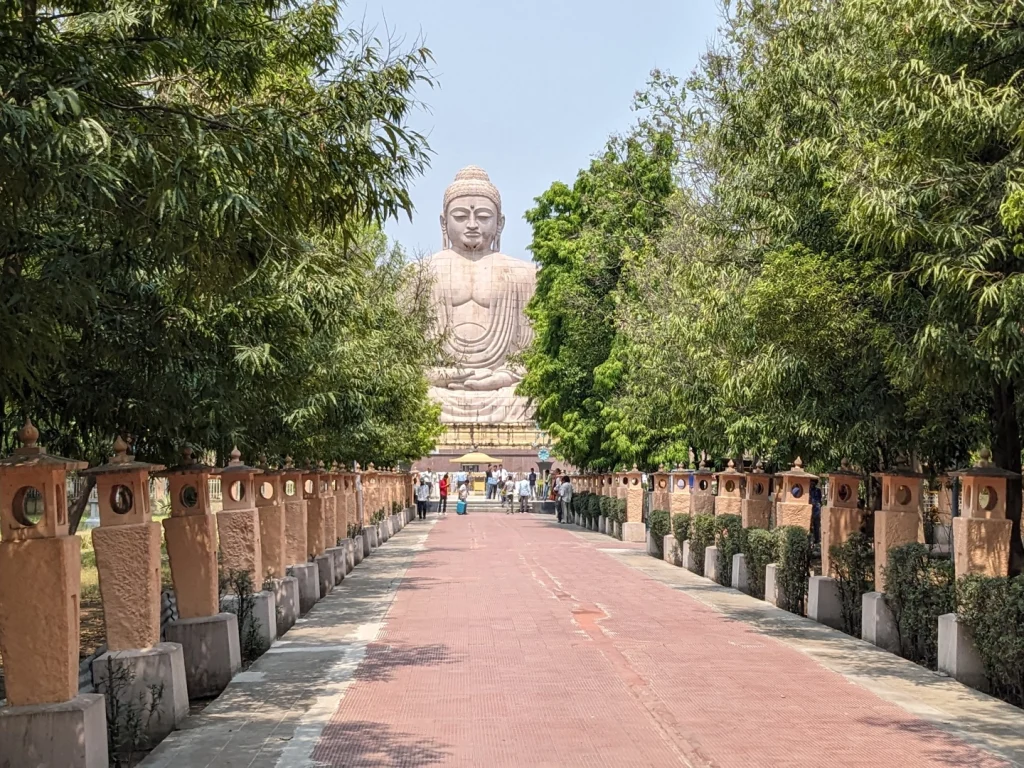
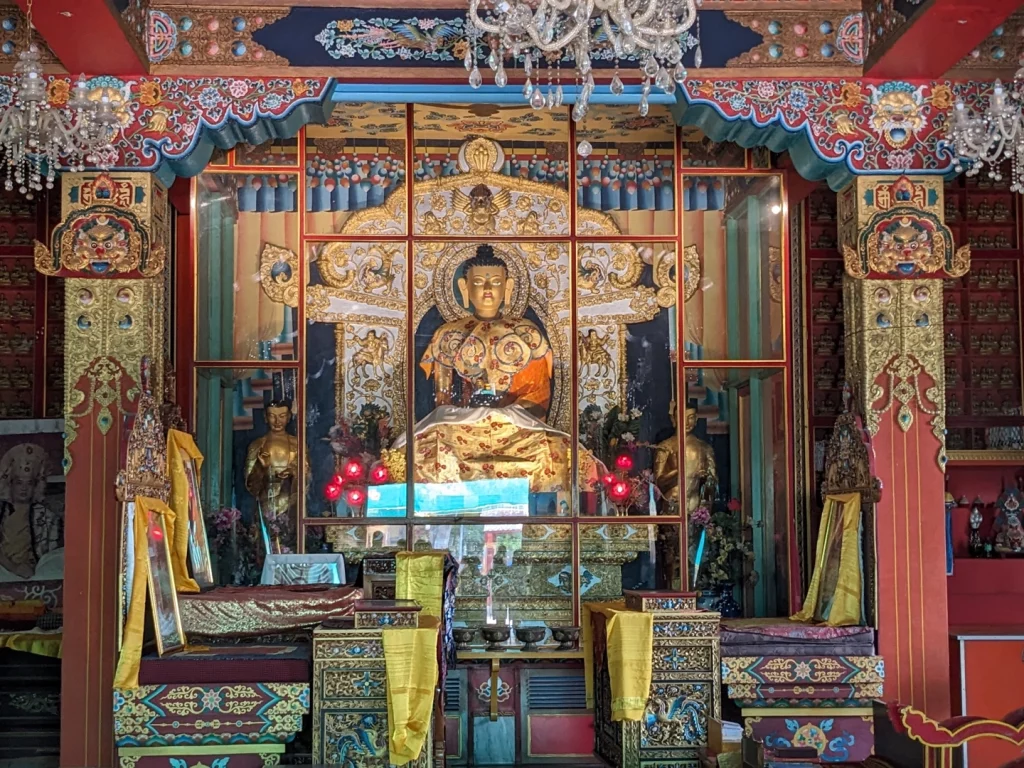
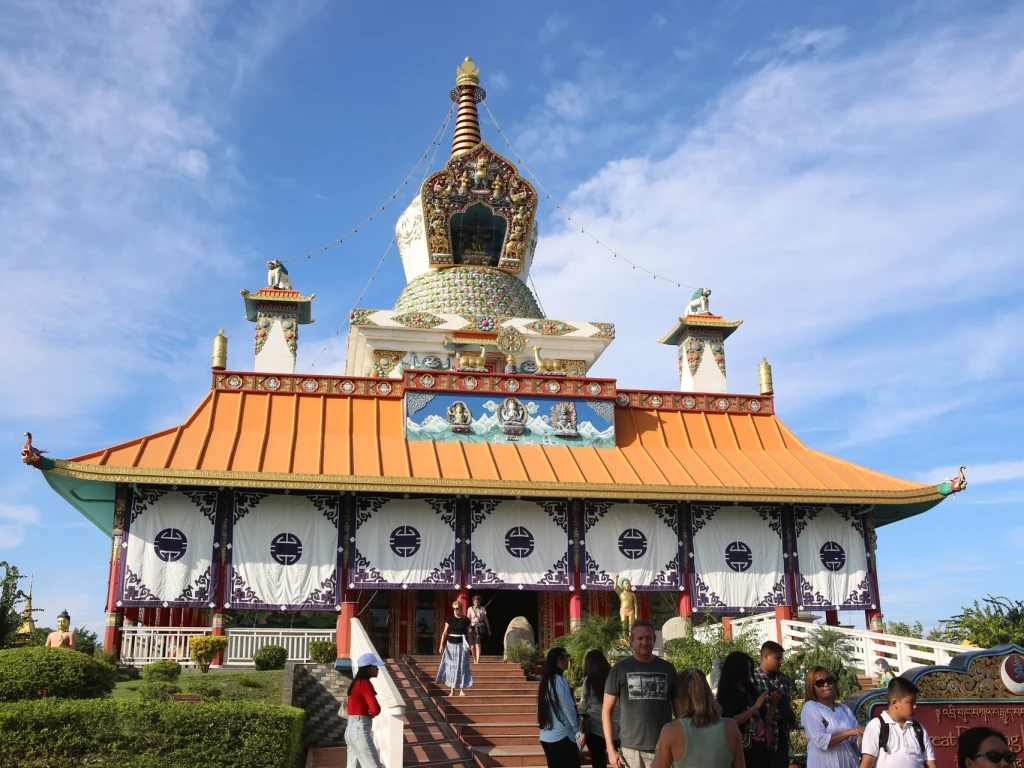
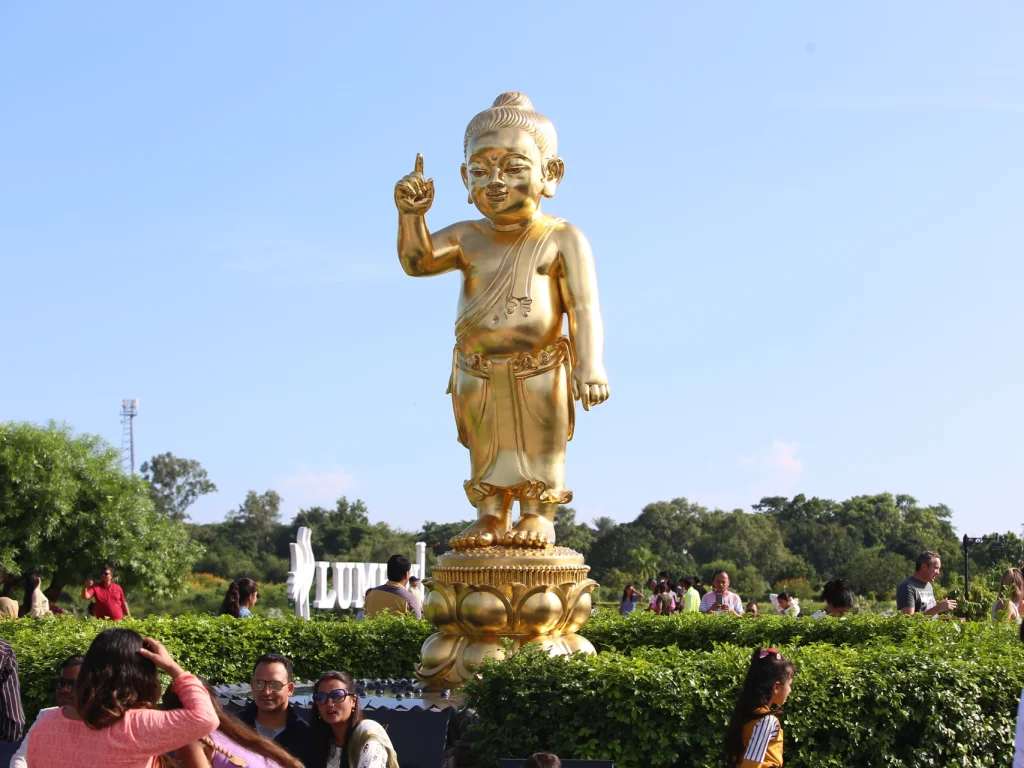
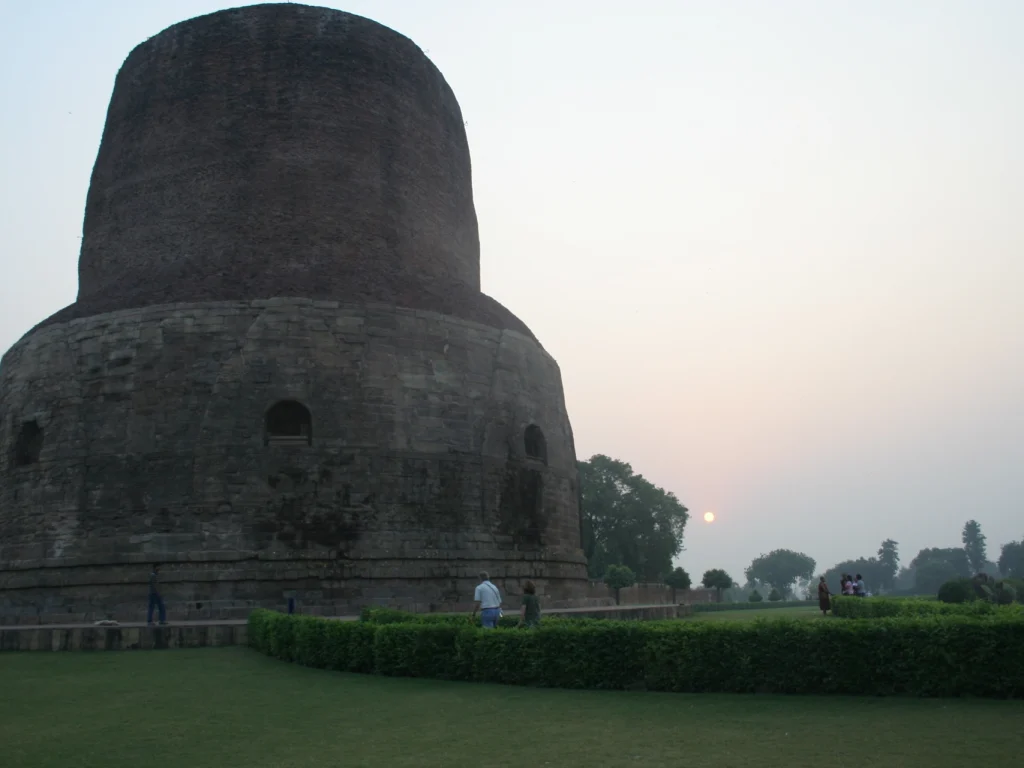
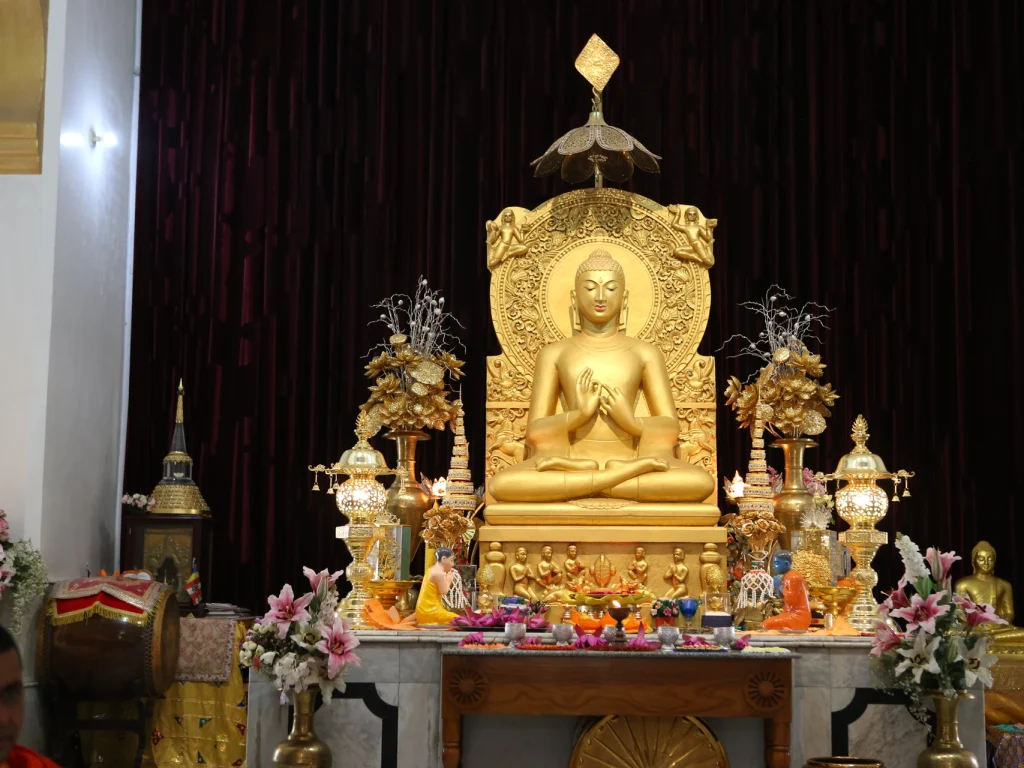
Retrace Buddha’s footsteps from his birth to Nirvana across Buddhist cultural and heritage sites across India
Buddhism came into being in Eastern India, during the period from the late 6th century to the early 4th century BC, a period of great social change and intense religious activity. Siddhartha Gautama, born a prince 2,500 years ago in Lumbini, renounced his royal heritage, and as a young man, sat under a tree in Bodhgaya determined to find a way to transcend suffering. He recognized that all of the world’s problems begin with a fundamental ignorance that causes beings to misunderstand the true nature of reality. Because of this, they engage in actions that lead to their own suffering and fail to recognize what leads to happiness. He gave his first sermon at the deer park in Sarnath, a small town near Varanasi. It was in Kushinagar towards evening, and, on a couch between two sal trees in the park Upavattana of the Mallas, that he “laid himself down on his right side, with one leg resting on the other, mindful and self-possessed”, and left his mortal body, saying “Decay is inherent in all things”. It was a full-moon day in May.
After the destruction of numerous Buddhist monasteries in the 6th century AD by the Huns, Buddhism revived, especially in the northeast, where it flourished until their collapse under the Buddhist Pala kings (8th-12th century AD). We do not know what contributed to the demise of Buddhism in its original homeland. Perhaps it was a combination of tolerance of Buddhism of other faiths that it was reabsorbed by a revitalized Hindu tradition, or that Buddhism in India became a monastic movement paying little heed to the laity or that some monasteries became wealthy enough to have attracted the Muslim invaders who sacked them in the 12th century AD. In April 2002 the British Broadcasting Corporation (BBC) asked its worldwide viewers and listeners to vote for the Fifty Places to Go in One’s Lifetime. The Golden Temple and the Taj Mahal were voted in the numbers six and ten respectively. We are going to both the places during this tour.
Overview
Highlights:
- Lumbini, Buddhas’ place of birth,
- Bodhgaya, where he gained enlightenment,
- Sarnath, where Buddha gave his first sermon,
- Kushinagar, where he left his mortal body,
- Dharamsala, home of His Holiness the Dalai Lama, and,
- Taj Mahal, Agra.
Itinerary
Day 1: Leave the Americas
Day 2: Delhi
Leave Europe or the Far East. Arrive late at night in Delhi. Representatives will meet you at the airport and escort you to your hotel for the night.
Day 3: Delhi
Sightseeing in Delhi, the capital city of a succession of mighty empires dating back to the 1st cent BC. Being at the cross road of North India, Delhi has been home to many cultures and religions and thus we will see expressions of the finest forms of architecture in the form of graves, forts, palaces and places of worship for the Hindus, Buddhists, Jains, Islam, Sikhs and the Bhai Faith. Discussion: “History of Religions in India”.
Day 4: Agra
Travel by train to Agra, city of the Taj Mahal. We will first visit the ghost city of Fatehpur Sikri – an epic poem in red sandstone, built by Emperor Akbar the Great in 1569. The Taj Mahal is perhaps the greatest love story ever told, built by Emperor Shahjehan on the death of his wife. Behind Agra Fort’s forbidding red sandstone battlements lie palaces that tell the story of the Mogul Empire. Later, take an overnight train to Lucknow.
Day 5: Balrampur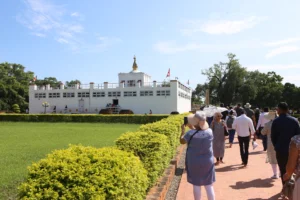
Spend the day in Balrampur.
Day 6: Lumbini
Drive to Lumbini in the South-Western Terai of Nepal. Queen Maya, returning to her parental home, gave birth to Lord Buddha in 623 BC under a Sala tree in full moon while the royal caravan rested there. Today, there is no trace of Lumbini village, but an Ashoka pillar commemorating the emperor’s visit in 249 BC, stands marking the sacred spot of Buddha’s birth. Also see Puskarni – the sacred pool where Maya Devi took a holy dip prior to giving birth, and where infant Buddha was given his first purification bath.
Day 7: Drive to Kushinager
Here towards evening on a couch between two sal trees, Buddha “laid himself down on his right side, with one leg resting on the other, mindful and self-possessed”, left his mortal body saying “Decay is inherent in all things”. This was the full-moon day of May.
Day 8: Drive to Patna
Spend the rest of the day sightseeing.
Day 9. Drive to Bodhgaya Seeking a deeper knowledge, Buddha journeyed into the forests with the intention of finally and completely realizing the infinite. Siddhartha sat beneath a Bodhi Tree in Bodhgaya. Touching the earth, thereby calling it to witness the countless lifetimes of virtue that had led him to this place of enlightenment, he entered into a state of deep meditation. Three days and nights passed and his intention was realized. Siddhartha became the Buddha, meaning the “Enlightened One.” The tree that stands today is believed to have grown from original peepal tree under which lord Buddha meditated and river Niranjana in which Buddha bathed after attaining enlightenment flows quietly outside the tiny hamlet.
Day 10: Bodhgaya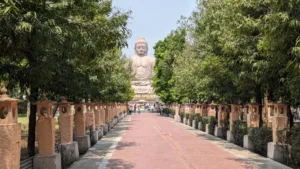
Spend the day sightseeing in Bodhgaya.
Day 11: Drive to Varanasi
Day 12: Varanasi
Dawn boat cruise on the holy Ganga. The time to see the ghats is early dawn when out of the morning mist, forms descend the steps, increasing to a solemn silent multitude lit by the sun’s first rays, immersing itself in the holy stream and to salute the sun, nature worship rituals prevalent in India 3,000 years ago. Visit many ghats and the 17th century Gyanvapi Mosque built by Aurangzeb on the site of the Vishwanath Golden Temple Walk & shop through ancient lanes of Varanasi, wide enough to touch buildings on both sides of the lane. Later drive to Sarnath where Buddha preached his first sermon to five disciples at the Deer Park here, enshrining the principles of his teaching into laws. The Dhamek Stupa marks the location of a once resplendent monastery. Also see a large complex of ruined monasteries cover the area north of the stupas, some belonging to the Kushan and Gupta period. The first monk communities probably settled here in the 3rd century BC. Discussion: “Buddhism in India”.
Day 13: Varanasi – Delhi -Amritsar
Continuing sightseeing of Varanasi, fly to Delhi, and then take train to Amritsar in the evening.
Day 14: Amritsar
Visit Harmandir Sahib, or, as known the world over, The Golden Temple, the holiest of Sikh places of worship, which enshrines the Holy Book of the Sikhs. Later, drive to Dharamsala.
Day 15: Dharamsala
Perched on the high slopes of the Kangra Valley, in the enchanting world where the spinning of the wheel and fluttering prayer flags spread the message of peace and universal harmony, Dharamsala is the home of the Buddhist spiritual head, His Holiness the Dalai Lama, and the Tibetan government in exile. Visit Tsuglag Khang the most important Tibetan Buddhist temple outside of Tibet
Day 16: Delhi
Return to Delhi through Amritsar.
Day 17: Delhi
Whole day free for shopping. Departure this night.
Day 18: Arrive in Americas
Morning arrival into Europe or the Far East. Evening arrival into the Americas.
Cost
COST: Please contact us for costing your particular tour.
COSTS INCLUDE:
- Hotel accommodation for 16 nights as above or similar on double/twin-sharing rooms.
- Air in economy class as listed above, but these are subject to schedule changes.
- English speaking Escort guide, from start to end of the tour, as per above itinerary.
- All applicable taxes including mandatory government service tax,.
- The services of a SJI representative at all airport and hotel transfers,
- Daily buffet breakfast at hotel coffee shop/restaurants.
- Monument entrance fees as per itinerary.
- All transfers and sightseeing/excursion by an air-conditioned private vehicle for your exclusive use.
- All road taxes, parking fee, fuel charges, interstate taxes and currently applicable taxes.
- Beverages, mineral water, alcohol, laundry, telephone calls; or other items of personal nature.
- Increases in airfares or Government imposed taxes or entrance fees
- Still camera or video camera fees at the various monuments and museums.
- Services not specifically stated in the itinerary.
- Tips/gratuities.
- Personal or travel insurance.
- Departure taxes or visa handling Fees.
- Any changes you may choose to make during your tour.
- International air travel
INFO (CONTACT AND OTHER)
Address: Spiritual Journeys, Inc., 262 Upland Road, Cambridge, MA 02140. USA.
E-mail: deepak@spiritualjourneys.net
Phone: +1-508-358-4267.
